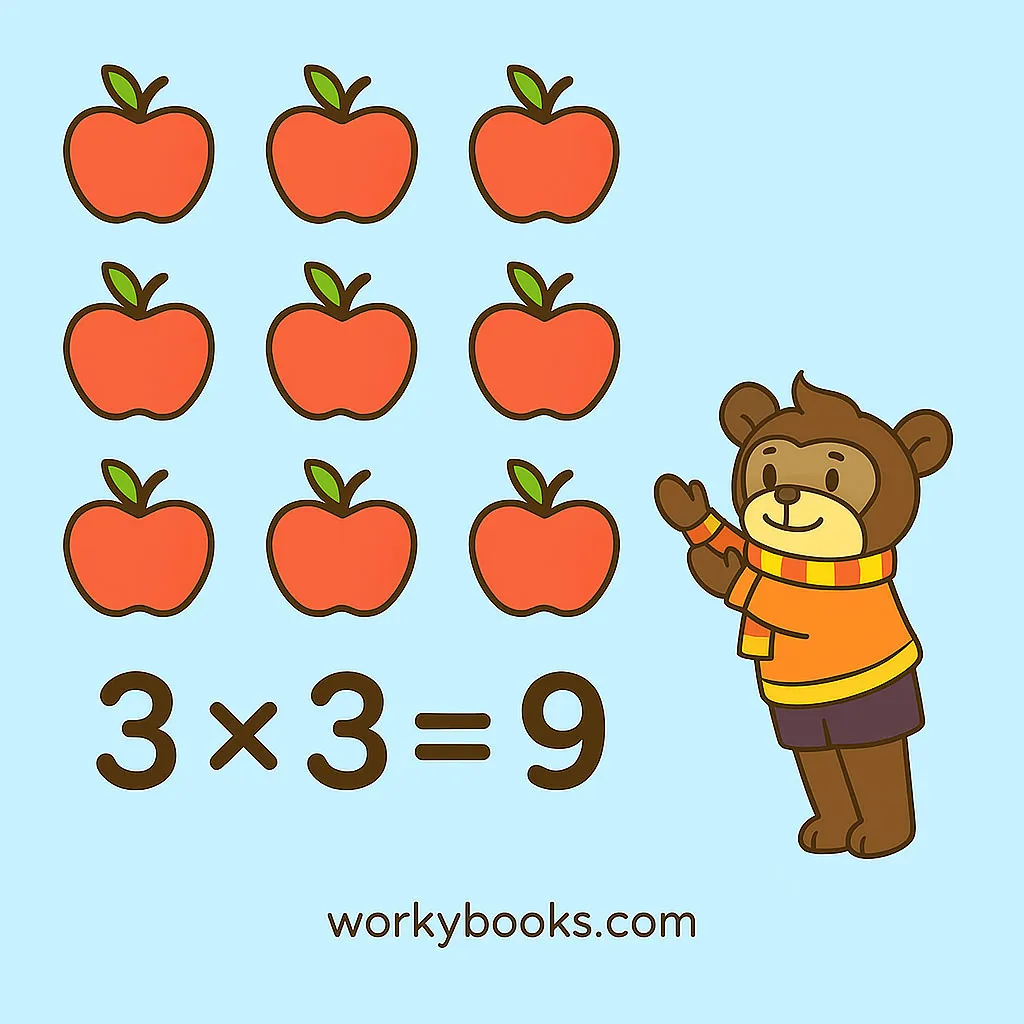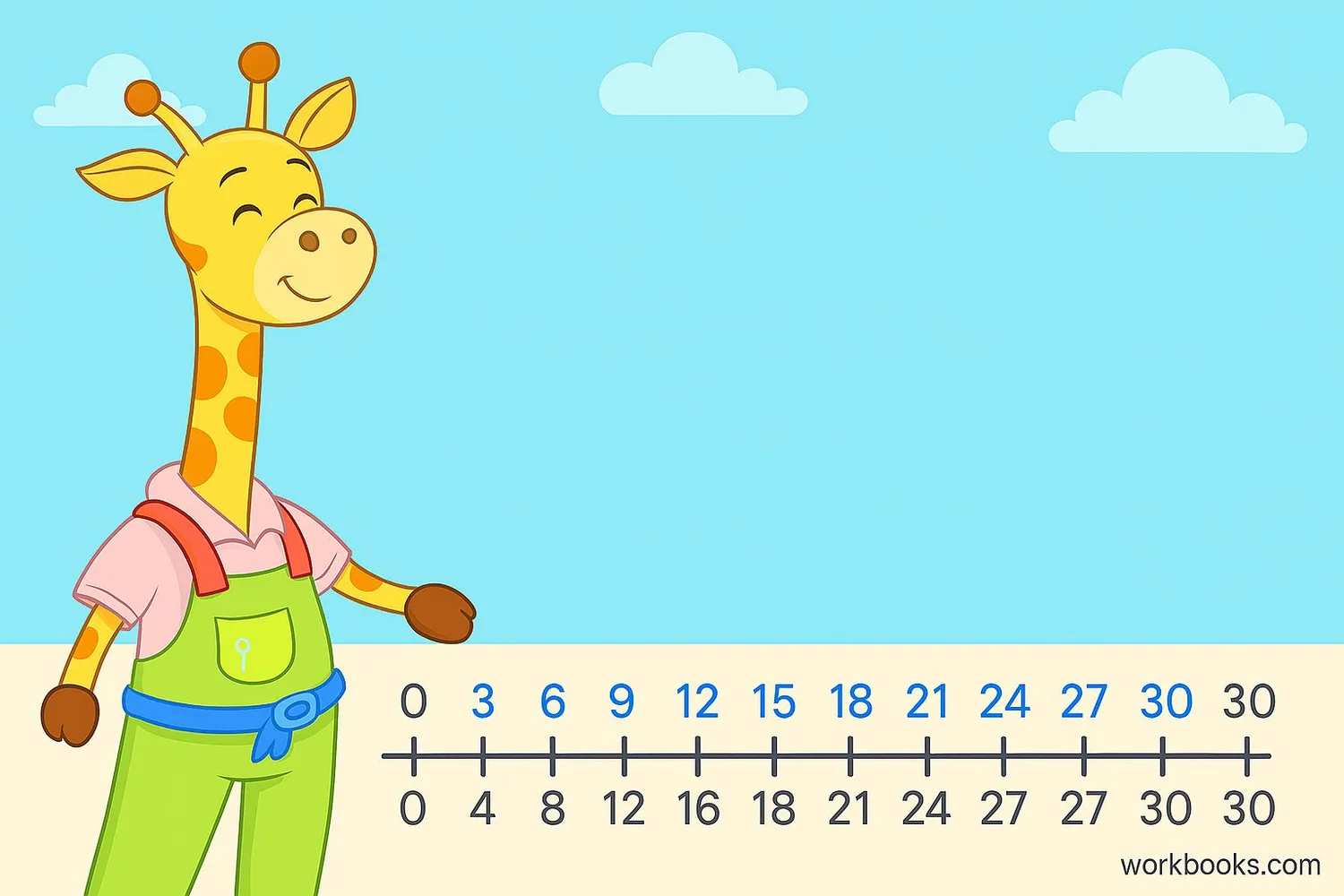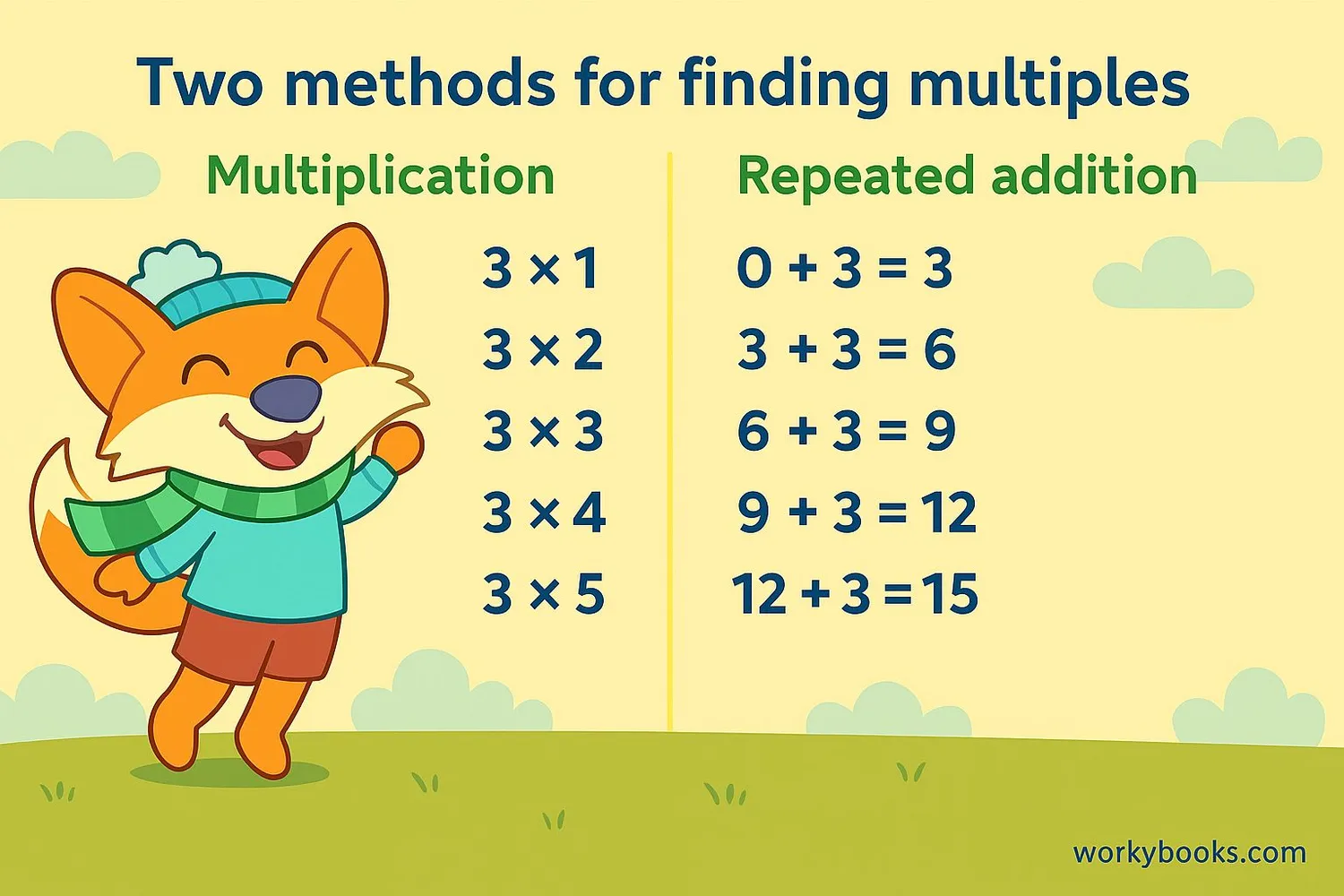Multiples of 3 - Definition, Examples, Quiz, FAQ, Trivia
Learn multiplication patterns with clear explanations, examples, charts, and practice activities
What Are Multiples?

Multiples are what we get when we multiply a number by whole numbers (1, 2, 3, 4, ...). For example, the multiples of 3 are:
3 × 1 = 3
3 × 2 = 6
3 × 3 = 9
3 × 4 = 12
... and so on.
So the multiples of 3 are 3, 6, 9, 12, 15, 18, 21, 24, 27, 30, and so on. Notice how each number is 3 more than the previous one? That's the pattern of multiples!
Key Concept
A multiple is the product of a number and any integer. The multiples of 3 are infinite and follow a pattern of adding 3 each time.
Multiples of 3

Here are the first 20 multiples of 3:
First 20 Multiples of 3
| Multiplication | Result | Multiplication | Result |
|---|---|---|---|
| 3 × 1 | 3 | 3 × 11 | 33 |
| 3 × 2 | 6 | 3 × 12 | 36 |
| 3 × 3 | 9 | 3 × 13 | 39 |
| 3 × 4 | 12 | 3 × 14 | 42 |
| 3 × 5 | 15 | 3 × 15 | 45 |
| 3 × 6 | 18 | 3 × 16 | 48 |
| 3 × 7 | 21 | 3 × 17 | 51 |
| 3 × 8 | 24 | 3 × 18 | 54 |
| 3 × 9 | 27 | 3 × 19 | 57 |
| 3 × 10 | 30 | 3 × 20 | 60 |
Pattern Recognition
Notice that all multiples of 3 end with 3, 6, 9, 2, 5, 8, 1, 4, 7, or 0? This pattern repeats every 10 multiples!
How to Find Multiples of 3

There are two easy ways to find multiples of 3:
Method 1: Multiplication
Multiply 3 by any whole number: 3 × 1 = 3, 3 × 2 = 6, 3 × 3 = 9, 3 × 4 = 12, etc.
Method 2: Repeated Addition
Start with 0 and keep adding 3:
0 + 3 = 3
3 + 3 = 6
6 + 3 = 9
9 + 3 = 12
... and so on.
You can use whichever method is easier for you. Both will give you the same multiples of 3!
Key Formula
Where n is any natural number (1, 2, 3, 4, ...)
Divisibility Rule for 3

There's a special trick to know if any number is a multiple of 3:
Divisibility Rule for 3: A number is divisible by 3 if the sum of its digits is divisible by 3.
Let's try with 246:
2 + 4 + 6 = 12
Is 12 divisible by 3? Yes (12 ÷ 3 = 4)
So 246 is a multiple of 3.
Another example: 1,734
1 + 7 + 3 + 4 = 15
Is 15 divisible by 3? Yes (15 ÷ 3 = 5)
So 1,734 is a multiple of 3.
This rule works for any number, no matter how big!
Remember
This divisibility rule only works for 3. Other numbers have different rules!
Examples of Multiples of 3

Multiples of 3 are all around us! Here are some examples:
Example 1: A tricycle has 3 wheels. 3 is a multiple of 3 (3 × 1 = 3).
Example 2: A six-pack of soda has 6 cans. 6 is a multiple of 3 (3 × 2 = 6).
Example 3: A dozen eggs is 12 eggs. 12 is a multiple of 3 (3 × 4 = 12).
Example 4: There are 60 minutes in an hour. 60 is a multiple of 3 (3 × 20 = 60).
Now let's practice identifying multiples of 3. Which of these numbers are multiples of 3?
Answer: The multiples of 3 are 15, 27, 33, 45, 54, and 60. Use the divisibility rule to check!
Multiples of 3 Practice Quiz
Test your knowledge with this 5-question quiz. Choose the correct answer for each question.
Frequently Asked Questions
Here are answers to common questions about multiples of 3:
Math Trivia
Discover interesting facts about multiples and the number 3:
Ancient Number Systems
The concept of multiples dates back to ancient civilizations. The Babylonians used multiplication tables as early as 2000 BCE!
The Rule of Three
The divisibility rule for 3 was first documented by the Greek mathematician Pythagoras in the 6th century BCE.
Digit Sum Pattern
For any multiple of 3, if you keep adding the digits until you get a single digit, the result will always be 3, 6, or 9.
Nature's Favorite Number
The number 3 appears frequently in nature: 3 primary colors, 3 states of matter, 3 dimensions, and many plants have leaves in groups of 3.





